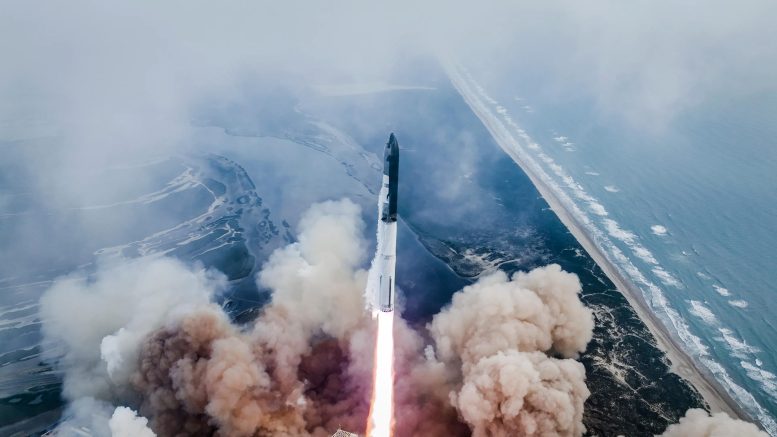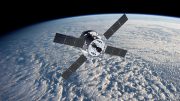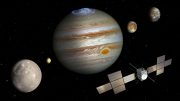
SpaceX launched the third integrated flight test of its Super Heavy booster and Starship upper stage from the company’s Starbase orbital launch pad at 8:25 a.m. CT on March 14. This flight test is an important milestone toward providing NASA with a Starship HLS for its Artemis missions. Credit: SpaceX
NASA and SpaceX are advancing the Artemis missions by testing the Starship human landing system, which is crucial for returning humans to the Moon and exploring further into space. Recent tests have focused on spacecraft orbit achievement and cryogenic propellant transfer, essential for sustaining deep space missions.
As part of NASA’s Artemis campaign to return humans to the Moon for the benefit of all, the agency is working with SpaceX to develop the company’s Starship human landing system (HLS), which will land astronauts near the Moon’s South Pole during the Artemis III and Artemis IV missions. On March 14, SpaceX launched the third integrated flight test of its Super Heavy booster and Starship upper stage, an important milestone toward providing NASA with a Starship HLS for its Artemis missions.
A complement of 33 Raptor engines, fueled by super-cooled liquid methane and liquid oxygen, powered the Super Heavy booster with Starship stacked on top, from the company’s Starbase orbital launch pad at 8:25 a.m. CDT. Starship, using six Raptor engines, separated from the Super Heavy booster employing a hot-staging technique to fire the engines before separation at approximately three minutes into the flight, in accordance with the flight plan. This was the third flight test of the integrated Super Heavy-Starship system.
“With each flight test, SpaceX attempts increasingly ambitious objectives for Starship to learn as much as possible for future mission systems development. The ability to test key systems and processes in flight scenarios like these integrated tests allows both NASA and SpaceX to gather crucial data needed for the continued development of Starship HLS,” said Lisa Watson-Morgan, HLS Program Manager at NASA’s Marshall Space Flight Center in Huntsville, Alabama.
Achievements in Spacecraft Testing
This test accomplished several important firsts that will contribute to the development of Starship for Artemis lunar landing missions. The spacecraft reached its expected orbit and Starship completed the full-duration ascent burn.
One objective closely tied to future Artemis operations is the transfer of thousands of pounds of cryogenic propellant between internal tanks during the spacecraft’s coast phase as part of NASA’s Space Technology Missions Directorate 2020 Tipping Point awards. The propellant transfer demonstration operations were completed, and the NASA-SpaceX team is currently reviewing the flight data that was received. This Tipping Point technology demonstration is one of more than 20 development activities NASA is undertaking to solve the challenges of using cryogenic fluids during future missions.
Innovations in Space Exploration
As a key step toward understanding how super-cooled propellant sloshes within the tanks when the engines shut down, and how that movement affects Starship’s stability while in orbit, engineers will study flight test data to assess the performance of thrusters that control Starship’s orientation in space. They are also interested to learn more about how the fluid’s movement within the tanks can be settled to maximize propellant transfer efficiency and ensure Raptor engines receive needed propellant conditions to support restart in orbit.
“Storing and transferring cryogenic propellant in orbit has never been attempted on this scale before,” said Jeremy Kenny, project manager, NASA’s Cryogenic Fluid Management Portfolio at Marshall. “But this is a game-changing technology that must be developed and matured for science and exploration missions at the Moon, Mars, and those that will venture even deeper into our solar system.”
Under NASA’s Artemis campaign, the agency will land the first woman, first person of color, and its first international partner astronaut on the lunar surface and prepare for human expeditions to Mars. Commercial human landing systems are critical to deep space exploration, along with the Space Launch System rocket, Orion spacecraft, advanced spacesuits and rovers, exploration ground systems, and the Gateway space station.









Be the first to comment on "Starship Soars in Groundbreaking Test for NASA’s Moon Mission"